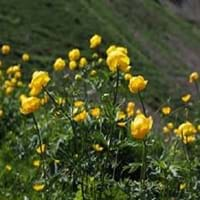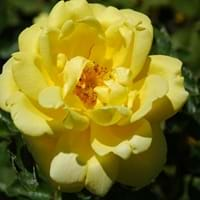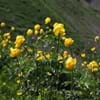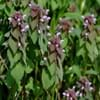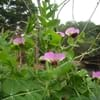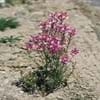Life Span
Perennial
Perennial
Type
Herbaceous Perennial
Perennial
Origin
Central America
Hybrid origin
Types
Trollius laxus , Trollius asiaticus , Trollius pumilus
Not Available
Number of Varieties
Not Available
Habitat
Temperate Regions
gardens, Pastures, Prairies, Terrestrial, Tropical regions
USDA Hardiness Zone
3-8
3-8
AHS Heat Zone
12 - 1
10-1
Sunset Zone
A1, A2, A3, H1, H2, 1a, 1b, 2a, 2b, 3a, 3b, 4, 5, 6, 7, 8, 9, 10, 11, 12, 13, 14, 15, 16, 17, 18, 19, 20, 21, 22, 23, 24
1a, 1b, 2a, 2b, 3a, 3b, 4, 5, 6, 7, 8, 9, 10, 11, 12, 13, 14, 15, 16, 17, 18, 19, 20, 21, 22, 23, 24
Habit
Clump-Forming
Oval or Rounded
Flower Color
Orange, Yellow
Not Available
Flower Color Modifier
Bicolor
Not Available
Fruit Color
Brown
Non Fruiting Plant
Leaf Color in Spring
Green, Gray Green
Not Available
Leaf Color in Summer
Green, Gray Green
Not Available
Leaf Color in Fall
Green, Gray Green
Not Available
Leaf Color in Winter
Light Green
Light Green
Leaf Shape
Palmate
Pinnate
Plant Season
Spring, Summer, Fall
Summer, Fall
Sunlight
Full Sun
Full Sun, Partial Sun
Type of Soil
Loam, Sand
Loam, Sand
The pH of Soil
Neutral
Acidic, Neutral
Soil Drainage
Well drained
Well drained
Bloom Time
Early Summer, Summer, Late Summer, Early Fall, Fall
Early Summer, Summer, Late Summer, Early Fall
Tolerances
Drought
Drought
Where to Plant?
Ground, Pot
Ground, Pot
How to Plant?
Divison
Grafting, Stem Planting, Transplanting
Plant Maintenance
Medium
Medium
Watering Requirements
Keep ground moist
Form a Soil ring to water efficiently, Requires regular watering, Water twice a day in the initial period, Water when soil is dry
In Summer
Lots of watering
Lots of watering
In Spring
Moderate
Moderate
In Winter
Average Water
Average Water
Soil pH
Neutral, Slightly Acidic, Slightly Alkaline
Acidic, Neutral
Soil Type
Clay, Loam
Loam, Sand
Soil Drainage Capacity
Poorly Drained
Well drained
Sun Exposure
Full Sun, Partial Sun
Full Sun, Partial Sun
Pruning
Prune after flowering, Remove damaged leaves, Remove dead branches, Remove dead leaves
Prune if you want to improve plant shape, Remove damaged leaves, Remove dead leaves, Remove deadheads, Shape and thin as needed
Fertilizers
All-Purpose Liquid Fertilizer, fertilize in spring
All-Purpose Liquid Fertilizer, organic fertlizers
Pests and Diseases
Pest Free, Powdery mildew
Aphids, Bacterial Diseases, Mites, Slugs
Plant Tolerance
Drought, Moisture
Drought
Flower Petal Number
Single
Not Available
Edible Fruit
No
Not Available
Foliage Texture
Medium
Not Available
Foliage Sheen
Matte
Not Available
Attracts
Butterflies
Not Available
Allergy
blisters, Burning sensation, Diarrhea, Irritation to intestines, Kidney Disease
no allergic reactions
Aesthetic Uses
along a porch, deck or patio, Bog Garden, Borders, Landscape Designing, Mixed Border, small hedge, Wild gardens
Beautification, Bouquets
Beauty Benefits
No Beauty Benefits
Not Available
Edible Uses
Sometimes
Yes
Environmental Uses
Air purification
Air purification
Medicinal Uses
Vitamin C
No Medicinal Use
Part of Plant Used
Whole plant
Flowers
Other Uses
Traditional medicine
Showy Purposes, Used as Ornamental plant
Used As Indoor Plant
No
No
Used As Outdoor Plant
Yes
Yes
Garden Design
Cottage garden, Flower borders, Informal Garden, Showy Tree
Container, Cutflower, Feature Plant, Foundation, Mixed Border
Botanical Name
GOMPHRENA globosa 'Bicolor Rose'
ROSA 'Allgold'
Common Name
Globe Amaranth, Globe Flower, Gomphrena
Floribunda Rose
In Hindi
globe flower
रोजा allgold
In German
Trollblumen
rosa Allgold
In French
globe flower
rosa TousPlaqué
In Spanish
Trollius
rosa allgold
In Greek
globe flower
rosa allgold
In Portuguese
Trollius
rosa allgold
In Polish
Pełnik
rosa allgold
In Latin
globe flower
Rosa allgold
Phylum
Vascular plant
Not Available
Class
Equisetopsida
Not Available
Order
Ranunculales
Rosales
Family
Rhamnaceae
Rosaceae
Clade
Angiosperms, Eudicots
Angiosperms, Eudicots, Rosids
Tribe
Not Available
Not Available
Subfamily
Not Available
Rosoideae
Importance of Globe Flower and Floribunda Rose
Want to have the most appropriate plant for your garden? You might want to know the importance of Globe Flower and Floribunda Rose. Basically, these two plants vary in many aspects. Compare Globe Flower and Floribunda Rose as they differ in many characteristics such as their life, care, benefits, facts, etc. Every gardener must at least have the slightest clue about the plants he wants to plant in his garden. Compare their benefits, which differ in many ways like facts and uses. The medicinal use of Globe Flower is Vitamin C whereas of Floribunda Rose is No Medicinal Use. Globe Flower has beauty benefits as follows: No Beauty Benefits while Floribunda Rose has beauty benefits as follows: No Beauty Benefits.
Compare Facts of Globe Flower vs Floribunda Rose
How to choose the best garden plant for your garden depending upon its facts? Here garden plant comparison will help you to solve this query. Compare the facts of Globe Flower vs Floribunda Rose and know which one to choose. As garden plants have benefits and other uses, allergy is also a major drawback of plants for some people. Allergic reactions of Globe Flower are blisters, Burning sensation, Diarrhea, Irritation to intestines and Kidney Disease whereas of Floribunda Rose have no allergic reactions respectively. Having a fruit bearing plant in your garden can be a plus point of your garden. Globe Flower has no showy fruits and Floribunda Rose has showy fruits. Also Globe Flower is not flowering and Floribunda Rose is not flowering . You can compare Globe Flower and Floribunda Rose facts and facts of other plants too.
